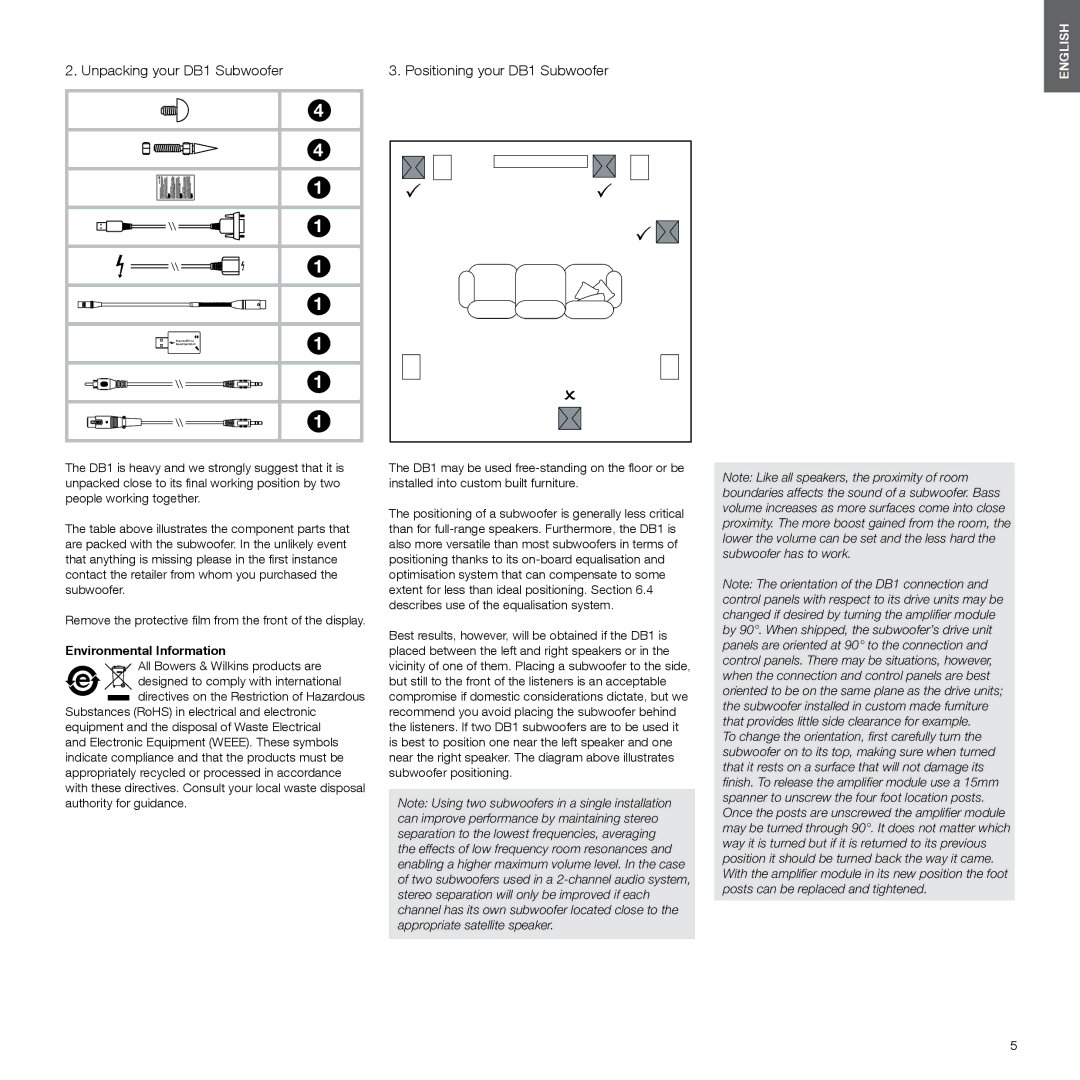
2. Unpacking your DB1 Subwoofer | 3. Positioning your DB1 Subwoofer |
4
4
1
1
1
1
1
1
1
ENGLISH
The DB1 is heavy and we strongly suggest that it is unpacked close to its final working position by two people working together.
The table above illustrates the component parts that are packed with the subwoofer. In the unlikely event that anything is missing please in the first instance contact the retailer from whom you purchased the subwoofer.
Remove the protective film from the front of the display.
Environmental Information
All Bowers & Wilkins products are designed to comply with international
![]() directives on the Restriction of Hazardous Substances (RoHS) in electrical and electronic equipment and the disposal of Waste Electrical
directives on the Restriction of Hazardous Substances (RoHS) in electrical and electronic equipment and the disposal of Waste Electrical
and Electronic Equipment (WEEE). These symbols indicate compliance and that the products must be appropriately recycled or processed in accordance with these directives. Consult your local waste disposal authority for guidance.
The DB1 may be used
The positioning of a subwoofer is generally less critical than for
Best results, however, will be obtained if the DB1 is placed between the left and right speakers or in the vicinity of one of them. Placing a subwoofer to the side, but still to the front of the listeners is an acceptable compromise if domestic considerations dictate, but we recommend you avoid placing the subwoofer behind the listeners. If two DB1 subwoofers are to be used it is best to position one near the left speaker and one near the right speaker. The diagram above illustrates subwoofer positioning.
Note: Using two subwoofers in a single installation can improve performance by maintaining stereo separation to the lowest frequencies, averaging the effects of low frequency room resonances and enabling a higher maximum volume level. In the case of two subwoofers used in a
Note: Like all speakers, the proximity of room boundaries affects the sound of a subwoofer. Bass volume increases as more surfaces come into close proximity. The more boost gained from the room, the lower the volume can be set and the less hard the subwoofer has to work.
Note: The orientation of the DB1 connection and control panels with respect to its drive units may be changed if desired by turning the amplifier module by 90°. When shipped, the subwoofer’s drive unit panels are oriented at 90° to the connection and control panels. There may be situations, however, when the connection and control panels are best oriented to be on the same plane as the drive units; the subwoofer installed in custom made furniture that provides little side clearance for example.
To change the orientation, first carefully turn the subwoofer on to its top, making sure when turned that it rests on a surface that will not damage its finish. To release the amplifier module use a 15mm spanner to unscrew the four foot location posts. Once the posts are unscrewed the amplifier module may be turned through 90°. It does not matter which way it is turned but if it is returned to its previous position it should be turned back the way it came. With the amplifier module in its new position the foot posts can be replaced and tightened.
5
